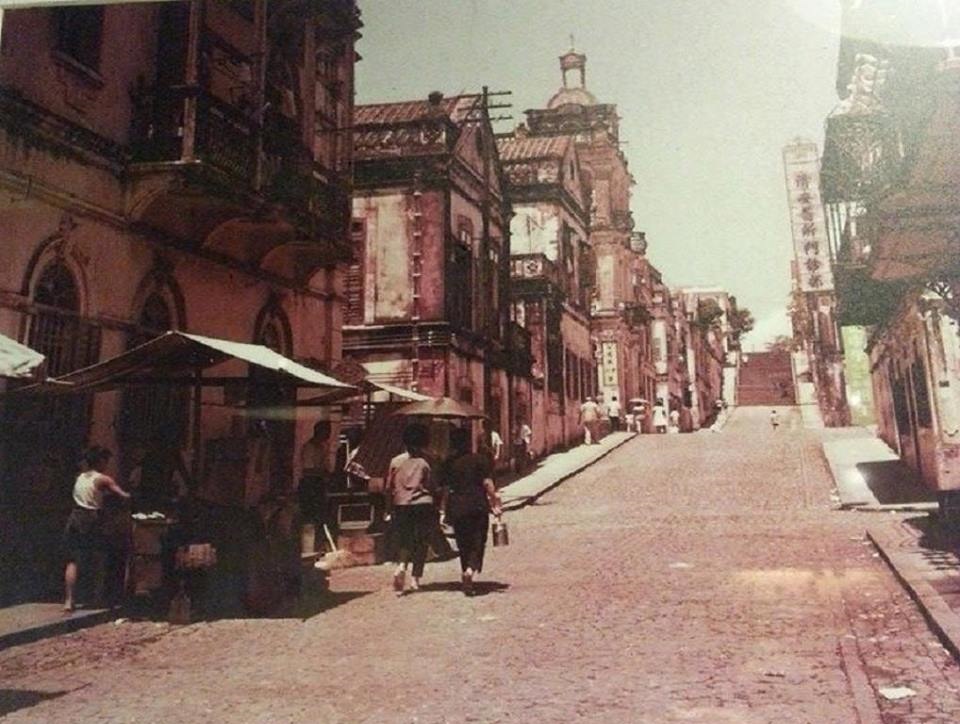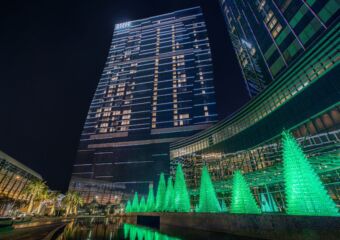Photo credit: Macau Holy House of Mercy website
While exploring Macau–specifically, the St. Lazarus neighborhood–you must have stumbled upon Albergue SCM (Albergue da Santa Casa da Misericordia), a bright yellow set of low-story houses and a church, forming a harmonious environment. It is owned by the Macau Holy House of Mercy for centuries now and hosts a cultural hub of traditional shops, creative ateliers, art galleries and a restaurant, Albergue 1601. 2019 marks the institution’s 450th year of existence.
Established in 1569, just 12 years after the Portuguese settled in Macau, it started with a different name: the Confraternity and Fraternity of the Macau Holy House of Mercy. The Macau Holy House of Mercy is part of a global movement that was born in Portugal (in 1498), started by Queen D. Leonor. She was one of the most important regents in history when it comes to relief reforms in Portugal.
The origins of St. Lazarus
It’s hard to picture that district as a place dedicated to isolating and treating those suffering from leprosy. However, that was its first purpose soon after the Portuguese settled in the region. It is believed that the first building in this area to ever be built (in 1570) was the Hermitage of Our Lady of Hope, which is now the church beside Albergue SCM.
This district was home for estranged local families until the 20th century when a revamp was made to have it cleaned and rebuilt. Its former wooden barracks serving as homes were reconstructed into a similar architecture of what you see now. “Why this name?”, one might wonder. Well, St. Lazarus is the saint protector of leprosy sufferers and this area was home to the sick, elderly and dying.
The Portuguese Jesuit Bishop, D. Belchior Carneiro, started the Confraternity and Fraternity of the Macau Holy House of Mercy in 1569, only one year after his arrival in Macau, as well as the S. Rafael Hospital (it’s believed to be the first hospital in Macau and the first in Asia to offer western treatments, practicing at the now Consulate of Portugal in Macau). He later established a leprosy treatment center next to where is now the St. Lazarus church.
He was determined to help out in whatever way he could. “When I arrived in this port known as the Name of God, there were very few Portuguese houses here. Shortly after arriving, I opened a hospital, which admits both Christians and pagans. I also created a Lay Fraternity of the Holy House of Mercy to give succour to all the poor and miserable and needy (…)”, can be read in a letter he sent to the Jesuit General in Lisbon.

Source: Macau Antigo Blog
A Neighborhood for the Lepers
D. Belchior Carneiro had an active role in leading activities related to the poor and the blind all over Macau. The “lazars’ asylum”–as it was then called–helped isolate and treat locals suffering from leprosy. There were rooms and medical assistance, making this the first social welfare service to be founded in the city. The leprosy asylum then changed location and it has been in Coloane since 1947. D. Belchior Carneiro is also linked to the founding, in 1583, of what’s believed to be Macau’s first local political institution, the Senate.
In 1726, 115 lepers lived in that district and in 1735, their survival had to be financed by a Portuguese merchant due to the Macau Holy House of Mercy’s deep financial crisis. As more and more poor Chinese families moved from the city center to its outskirts–St. Lazarus was located outside its walls–the neighborhood started growing with time, even industrially. People established small silk factories and other businesses. It became a filthy and unwelcoming neighborhood, with bad sanitary conditions. When the bubonic plague hit, in 1894, this was Macau’s most afflicted area. Finally, in June 1900, Governor Eduardo Galhardo ordered the area to be demolished and totally revamped so health conditions would improve.
As for the church, although it’s difficult to establish with precision the exact year of its construction, records point to somewhere between 1558 and 1563. That is close to where the leprosy treatment center and shelter was located. Between 1900 and 1915, the treatment center suffered several attacks from local pirates, and the Portuguese administration soon changed its location. As for Albergue SCM, which is located at number 8, St. Lazarus Church promenade, it was known as “the grandmothers’ houses”. It started with five small houses, then two buildings with bedrooms and where, at a given time, there were hundreds of elderly and poor women living there. It was, as a matter of fact, a district designed to meet the poor and sick people’s needs.
Other purposes
In spite of having started as a caretaking institution, the Macau Holy House of Mercy also served other purposes. Implementation of taxes on previously unregulated activities, functioning as a bank, money lending, and the promotion of a very popular lottery were some of the other activities carried out by the institution. Even nowadays, this association is one of Macau’s most powerful when it comes to the financial support of charitable and art events.
The former “grandmothers’ houses” is now called Albergue (which means asylum in Portuguese) SCM (the Holy Mercy House’s initials for its Portuguese name, Santa Casa da Misericórdia). There is often some confusion between this place and the original location of the institution, which still remains in its original spot: up a narrowed alley leading to Senado Square.
Albergue SCM underwent renovation and restoration works in 2003 with a project by Macanese architect, Carlos Marreiros, in collaboration with engineers Gilberto Gomes and José Silveirinha. It is now managed by Marreiros, who owns an atelier on site, but also organizes several art gatherings and exhibitions. Generally, the Macau Holy House of Mercy also manages The Our Lady of Mercy Home for the Elderly, The Creche of the Macau Holy House of Mercy (nursery), and the Rehabilitation Centre for the Blind and actively contributes to the life of the city.
There is also Fantasia 10, a creative platform hub, the Music Conservatory in the same area, as well as Chef Neta’s cooking studio. The street frequently lights up with outdoor events, such as small fairs and markets and S. João Portuguese celebrations.
For more information on the Macau Holy House of Mercy, visit their official website
Albergue SCM 8 Calcada da Igreja de S. Lázaro, Macau



































